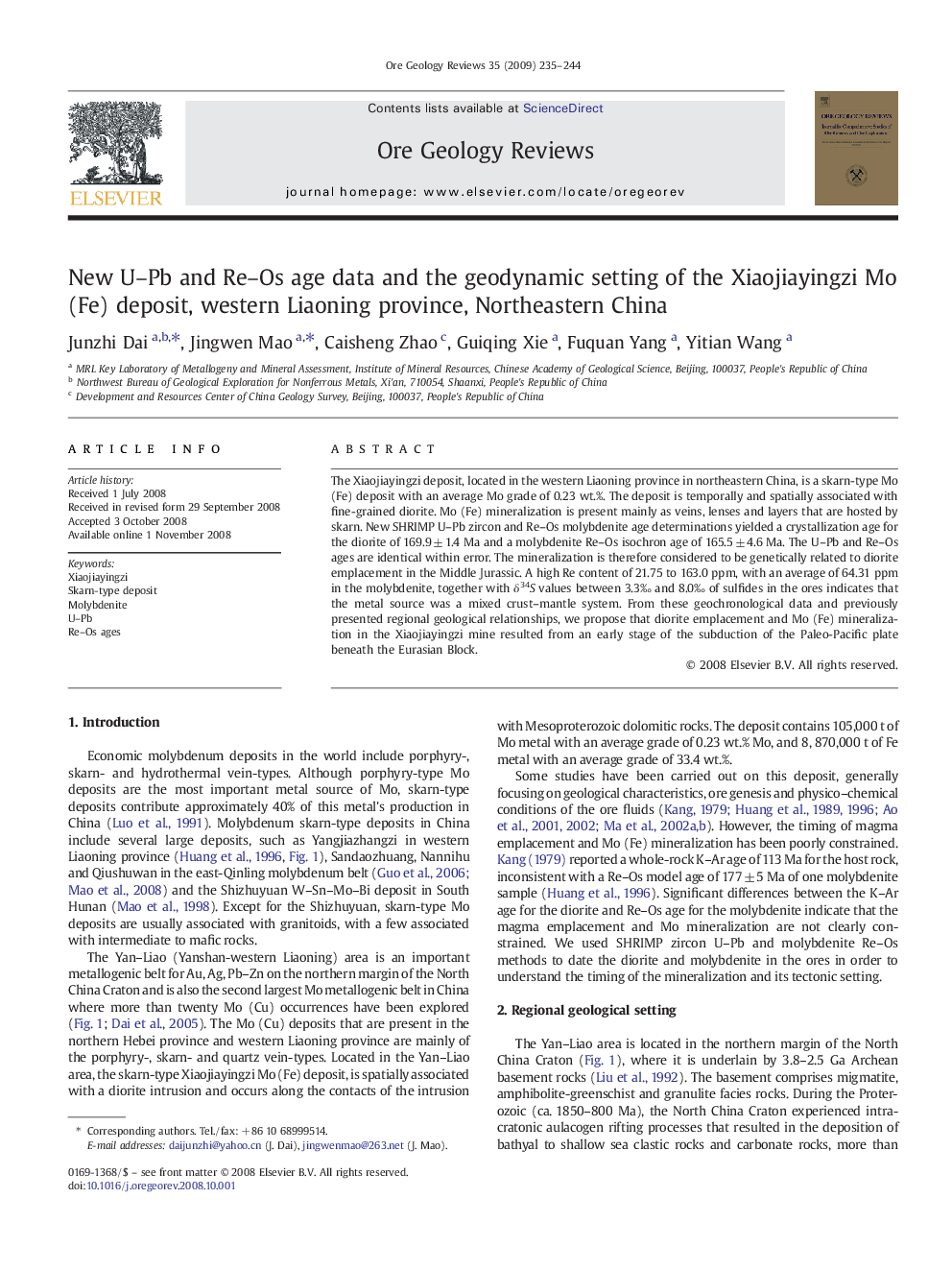| Article ID | Journal | Published Year | Pages | File Type |
|---|---|---|---|---|
| 4697929 | Ore Geology Reviews | 2009 | 10 Pages |
Abstract
The Xiaojiayingzi deposit, located in the western Liaoning province in northeastern China, is a skarn-type Mo (Fe) deposit with an average Mo grade of 0.23 wt.%. The deposit is temporally and spatially associated with fine-grained diorite. Mo (Fe) mineralization is present mainly as veins, lenses and layers that are hosted by skarn. New SHRIMP U-Pb zircon and Re-Os molybdenite age determinations yielded a crystallization age for the diorite of 169.9 ± 1.4 Ma and a molybdenite Re-Os isochron age of 165.5 ± 4.6 Ma. The U-Pb and Re-Os ages are identical within error. The mineralization is therefore considered to be genetically related to diorite emplacement in the Middle Jurassic. A high Re content of 21.75 to 163.0 ppm, with an average of 64.31 ppm in the molybdenite, together with δ34S values between 3.3Ⱐand 8.0Ⱐof sulfides in the ores indicates that the metal source was a mixed crust-mantle system. From these geochronological data and previously presented regional geological relationships, we propose that diorite emplacement and Mo (Fe) mineralization in the Xiaojiayingzi mine resulted from an early stage of the subduction of the Paleo-Pacific plate beneath the Eurasian Block.
Keywords
Related Topics
Physical Sciences and Engineering
Earth and Planetary Sciences
Economic Geology
Authors
Junzhi Dai, Jingwen Mao, Caisheng Zhao, Guiqing Xie, Fuquan Yang, Yitian Wang,
